UXTexture: A Journey of 100 Days and Beyond
Oct 9, 2023

As I was casually browsing through Medium one day, I stumbled upon a profile that would profoundly influence my creative journey. Krisztina Szerovay's profile, with the tagline "@sketchingforUX," immediately piqued my interest. Intrigued, I decided to explore her work, and I was fascinated by her creative approach.
Sketching has been a constant companion in my life. From my teen days to my time pursuing an architectural design education in university, I had always found solace in the act of putting pencil to paper and letting my thoughts flow as sketches. It was a form of expression that resonated deeply with me, and I had carried this passion with me throughout the years.
Krisztina's profile put a spark in me with a unique approach to communication and problem-solving through sketches. I was captivated by her ability to transform complex concepts into simple, visually compelling narratives. I find those not only visually appealing but also very memorable and educative.
My curiosity led me to her digital book, which introduced a captivating concept: a 100-day sketching challenge, followed by a 21-week prompt challenge. The idea was simple yet brilliant - to encourage daily sketching by providing prompts, objects, terms, and concepts to explore. I was already on a path to developing my sketching habits, particularly in the context of UX design, where visual communication is key to effective collaboration. Krisztina's book seemed like the perfect tool to elevate my skills and enrich my creativity. Ah, and a very fun fact, this book was designed in Figma :)
If you want to give yourself a very creative gift, you can contribute her and get your digital book here. (Also available on Amazon as paperback version.)
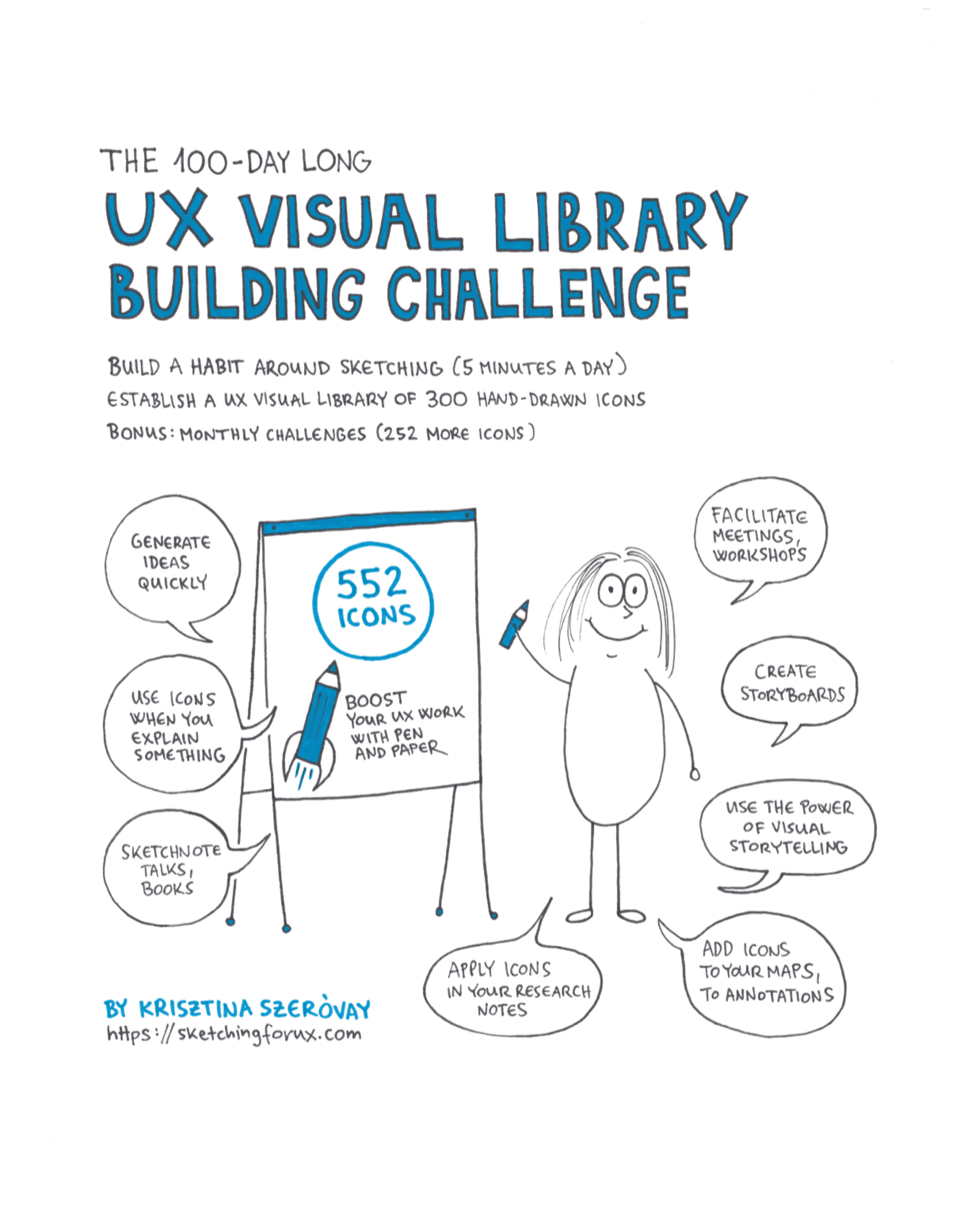
What is visual thinking and visual storytelling?
Visual thinking is a creative thinking process where people use visual tools like images, sketches, and diagrams to express an idea or develop a concept. It's a powerful method of presenting ideas or challenges visually, frequently resulting in enhanced problem-solving skills, increased creativity, and improved comprehension. Here are some benefits of visual thinking:
Problem-Solving: Visual thinking helps us break down complex problems into simpler components and visualize potential solutions.
Idea Generation: Visual thinking encourages the generation of new ideas and concepts by visually mapping connections and relationships between various elements.
Communication: Visual thinking aids in conveying information to others more effectively, as visual representations often transcend language barriers.
Memory Enhancement: Visual representations can improve memory retention as they engage the brain's visual memory systems.
Visual storytelling is the art of using visual elements, such as images, illustrations or animations, to create a narrative or story. It's a powerful way to engage and captivate an audience while communicating information or idea. Visual storytelling helps:
Emotion and Connection: Visual storytelling can evoke emotions and create a strong connection with the audience, making it effective for marketing and advertising.
Simplification: It simplifies complex narratives or concepts by condensing information into easily digestible visual sequences.
Engagement: Visual storytelling captivates the audience's attention and keeps them engaged, enhancing the retention of information.
Both are powerful tools for processing information, problem-solving, communication, and engagement. Visual thinking focuses on using visuals to understand and represent ideas, while visual storytelling uses visuals to tell a compelling narrative story about an idea or information.
How was my 100-day journey with UX sketching?
I call this journey "UXTexture" because every day and with prompt I discovered more and more layers and textures within the visual thinking process. After 100 days, my sketches came all together and they created a unique texture too.
One of the first things I noticed during my 100-day sketching challenge was the boost in my confidence. It allowed me to quickly attain a level of comfort with sketching in terms of UX that I had never experienced before. By sketching daily, I developed a sense of mastery that effected other aspects of my life, giving me the confidence to tackle complex problems and express my ideas visually.
For this creative journaling sessions I used iPad Pro, Apple Pen and Notability as a creative tool. I really love Notability's very simple yet powerful interface, also good and not complex features.
Days 1-4
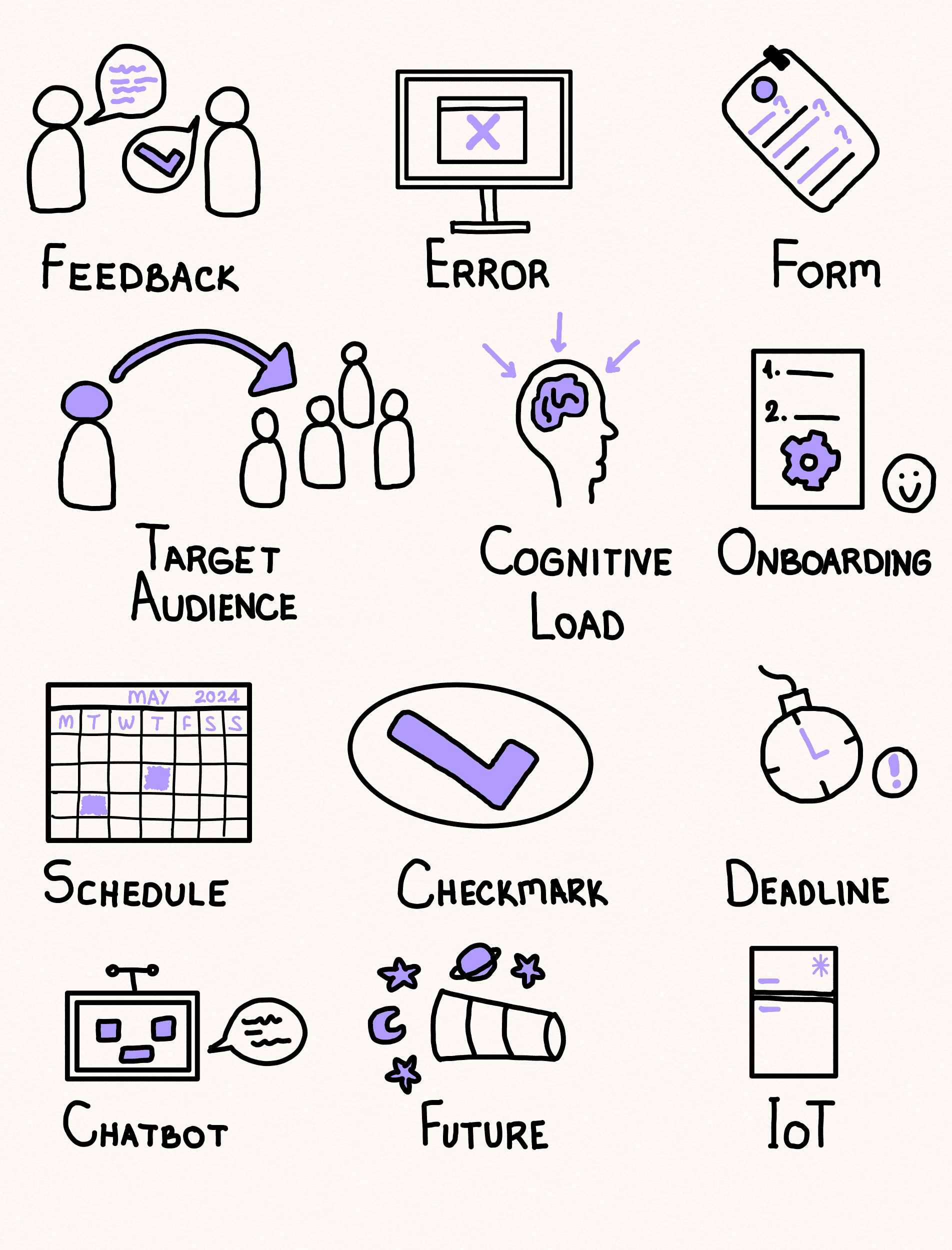
As a person obsessed with perfection, visual storytelling, and thinking shifted my focus from the quality of your visuals to the content itself. I admit that maybe I erased and re-drew countless lines when I was not happy with the quality of the lines. However, I am trying to overcome this obsession with rapid design :) Being a perfectionist is good but of course, we should not let it prevent our productivity. When you’re able to quickly convey ideas through sketches, you no longer worry about creating perfectly polished images. This peace of mind encourages me in the back of my mind about having more open and fluid discussions, fostering better communication.
Days 5-9
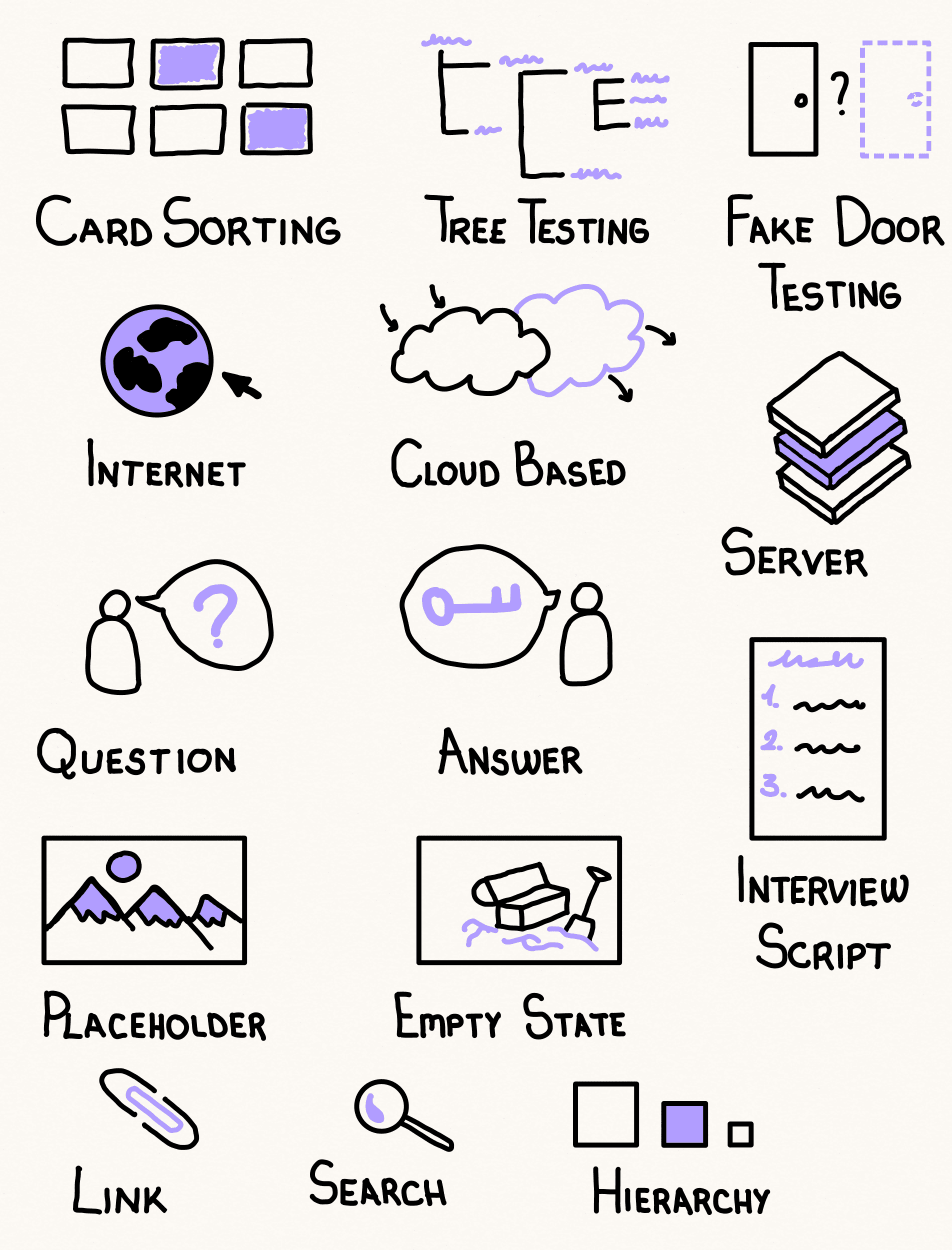
As I progressed through the challenge, I discovered that my sketching style was evolving. Visual storytelling and thinking allowed me to find my unique voice and style. It's like finding your own way of swimming in the sea. This individuality made my ideas stand out and resonate with others more profoundly.
Days 9-14
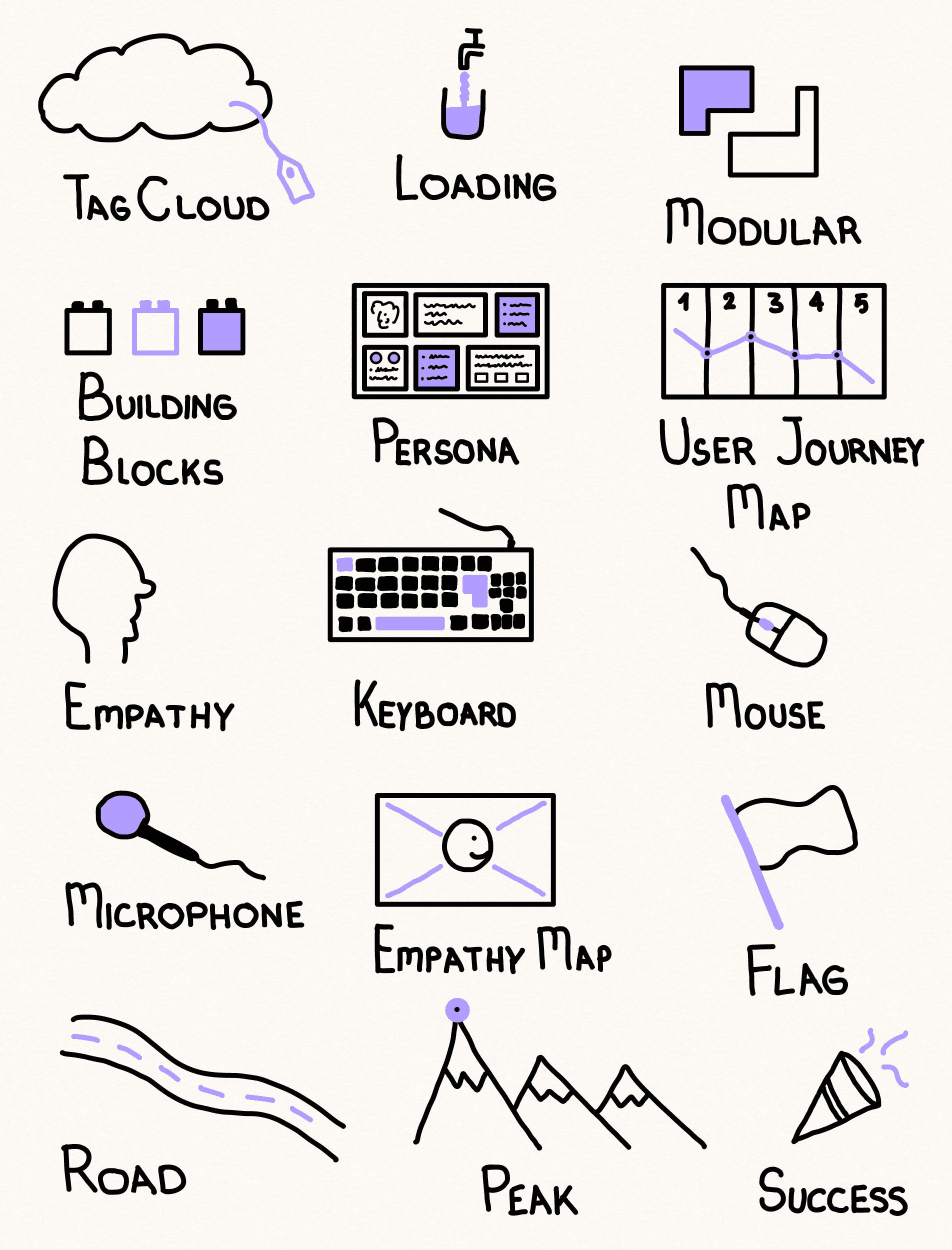
Visuals are a universal language that transcends barriers of language and culture. Through sketches, I realised that I can express complex ideas more efficiently and effectively than with words alone. This skill is invaluable in today's globalized world, where collaboration often involves diverse teams with varying language skills.
Days 15-18
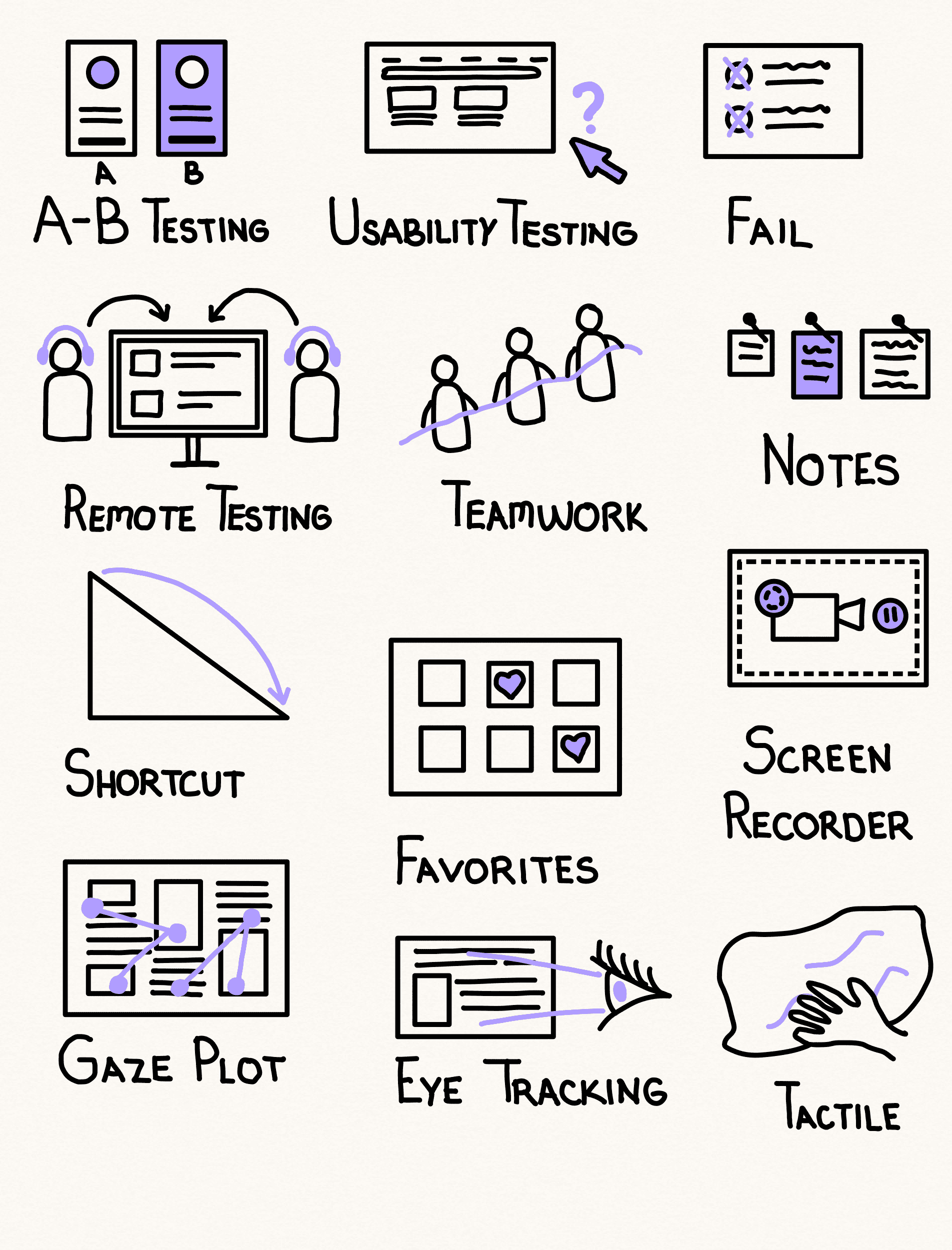
Visual storytelling and thinking empowered me to simplify intricate ideas by combining simple icons or sketching advanced concepts. By leveraging this creative approach, I developed compelling visual metaphors. For example, for the prompt "hidden" I preferred to draw a playful sketch which is a tiny-miny cat. I also learned many new terms during this journey. Some illustrations took much than I expected while some took just a snap of a finger.
Days 19-22

Visual storytelling and thinking aren't just personal tools; they are also powerful assets for collaboration and communication, especially in fields like user experience (UX) design and problem-solving.
Days 23-26
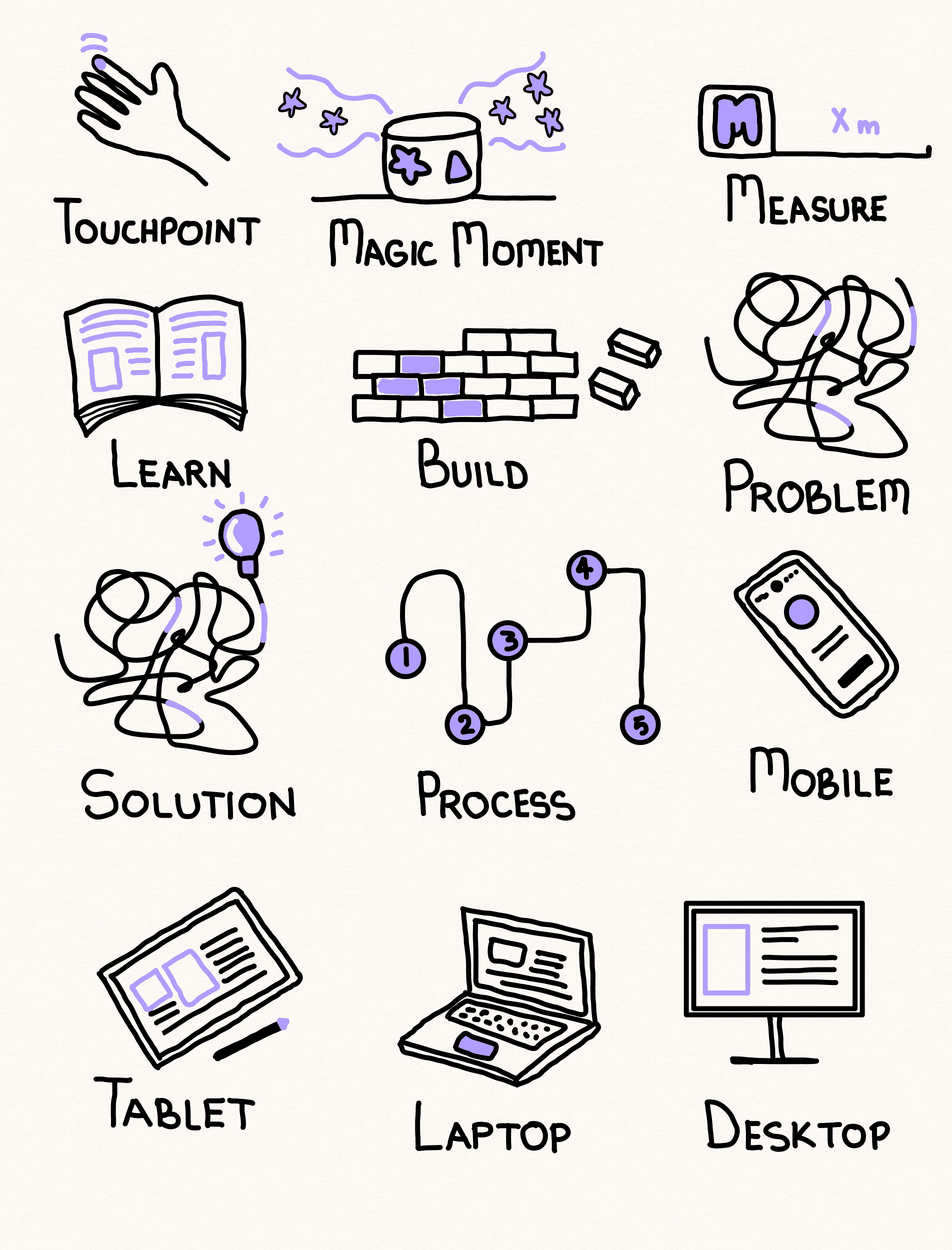
In a globally connected world, teams often comprise individuals with diverse linguistic backgrounds. Visuals transcend language barriers, ensuring that everyone can understand and contribute to the conversation, leading to more inclusive and productive collaboration.
Days 27-30
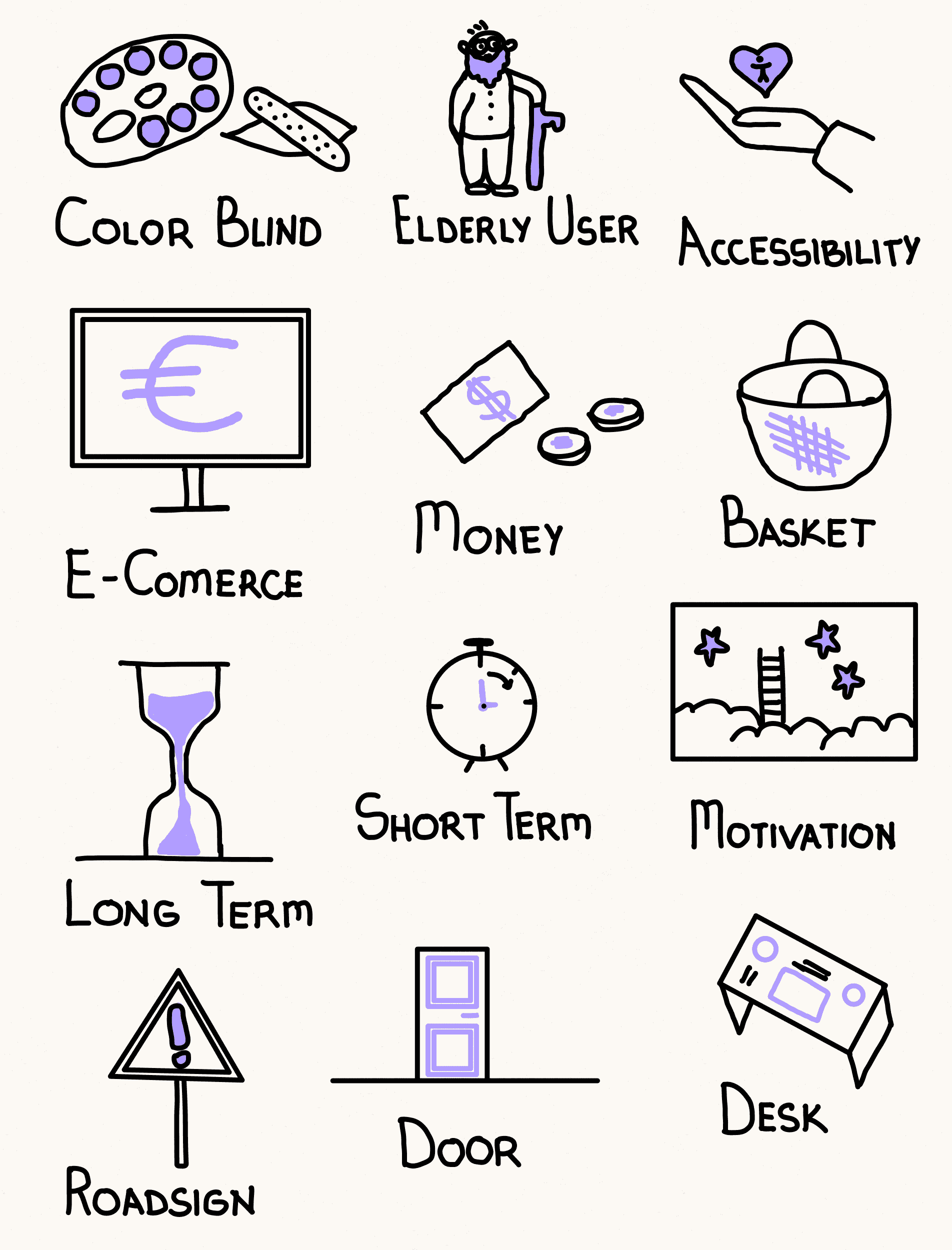
Visual thinking encourages creativity and ideation. When team members sketch out their ideas, it sparks innovation and opens doors to unexpected solutions. Collaborators can build on each other's visual cues, leading to richer and more innovative outcomes.
Days 31-34
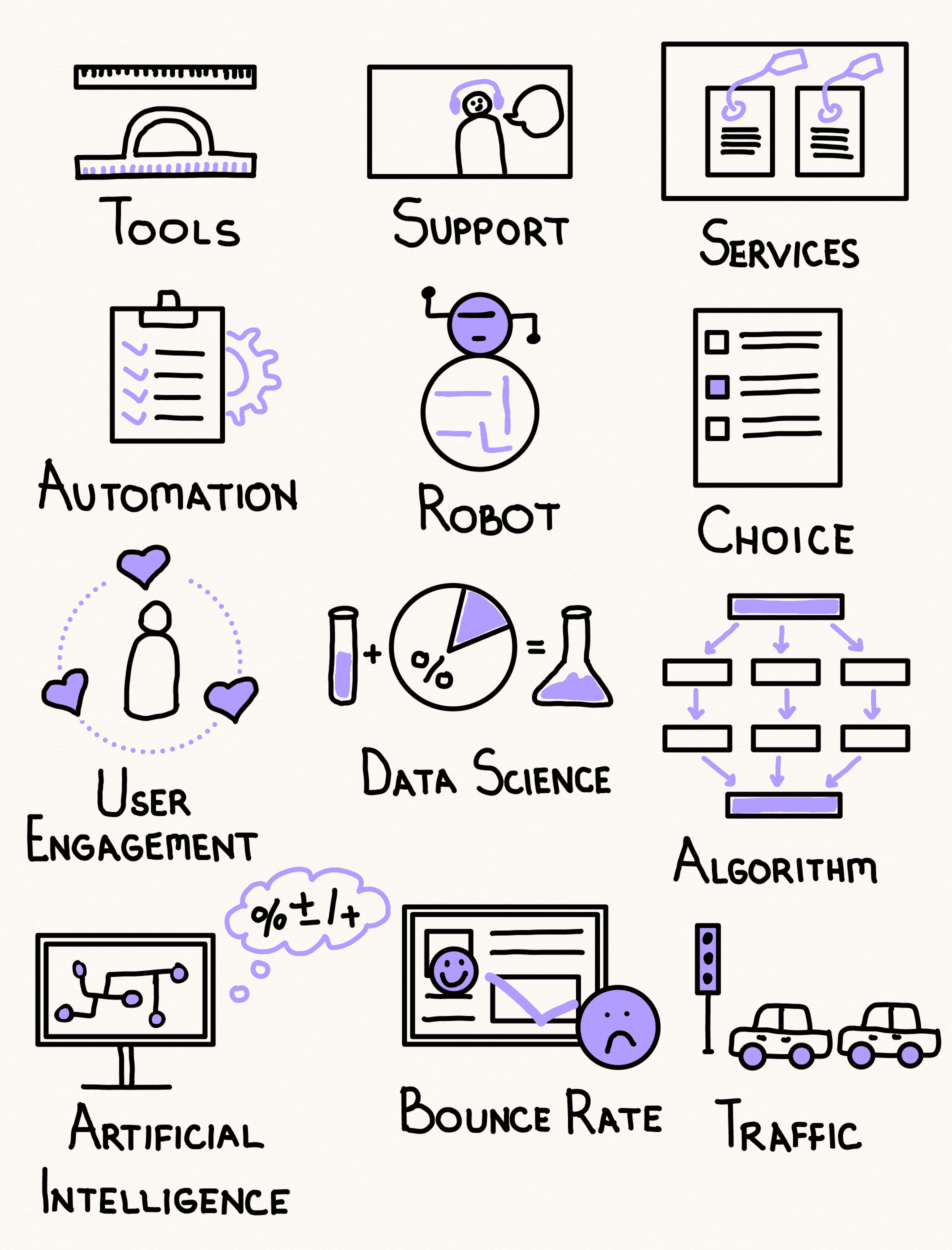
Complex decisions become more manageable when we can visualize the options. Visual thinking enables teams to map out scenarios, pros and cons, and potential outcomes, making it easier to arrive at a consensus quickly and effectively.
Days 35-39

In fields like UX design, understanding the user's perspective is crucial. Visual thinking allows me to put myself in the user's shoes and create solutions that resonate with their needs and preferences. This empathetic approach leads to more user-centric designs.
Days 39-43

Throughout my 100-day sketching challenge, I created a diverse visual sketch library, filled with icons, concepts, and metaphors that I can now use across my design and visual thinking practices. To see all of my results, keep an eye on at the end of this article. :)
Days 44-47
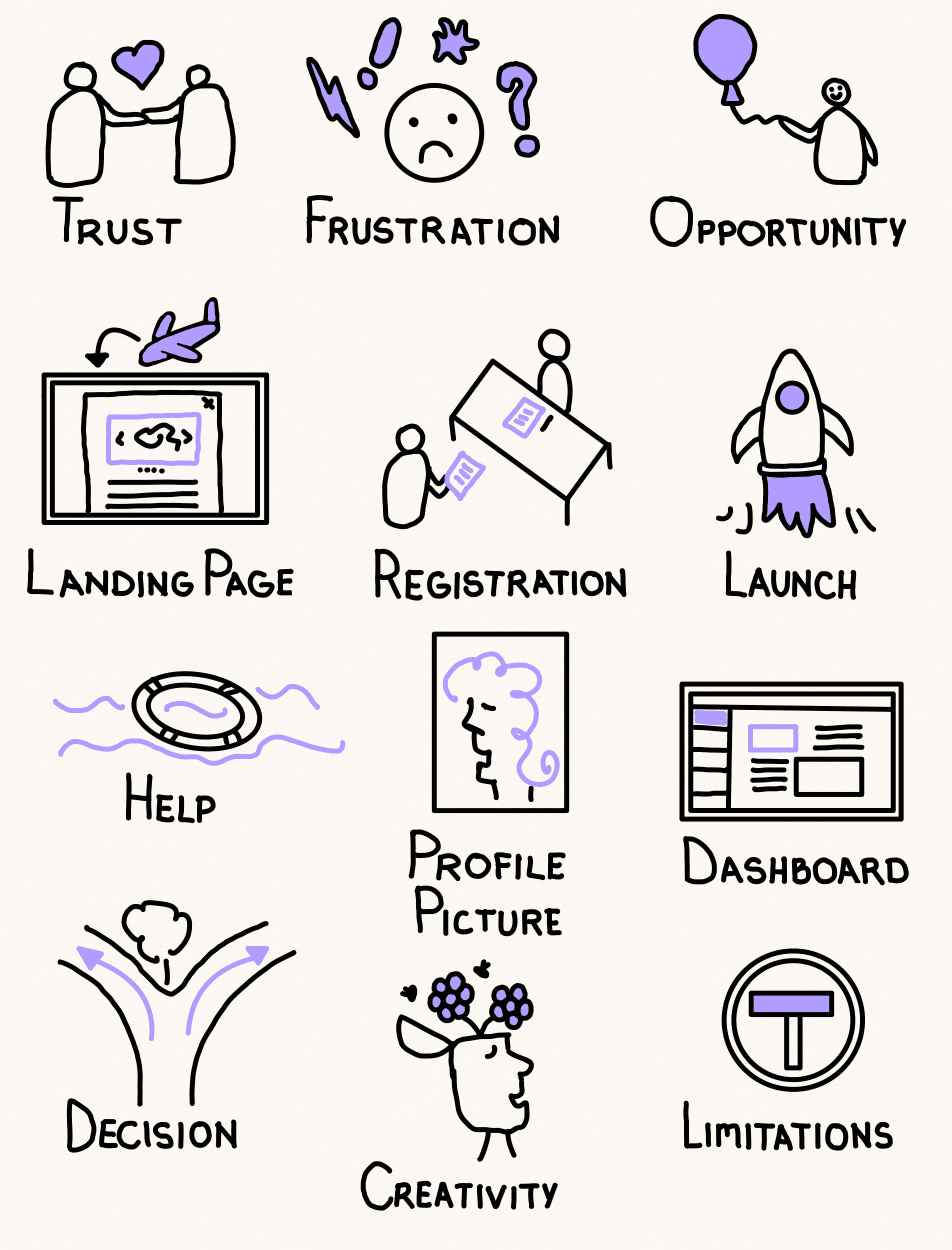
After every page, the author also provided her own solutions for the prompts. It was very interesting to see sometimes how our brains taught the same but sometimes the approach was completely different. :)
Days 48-51
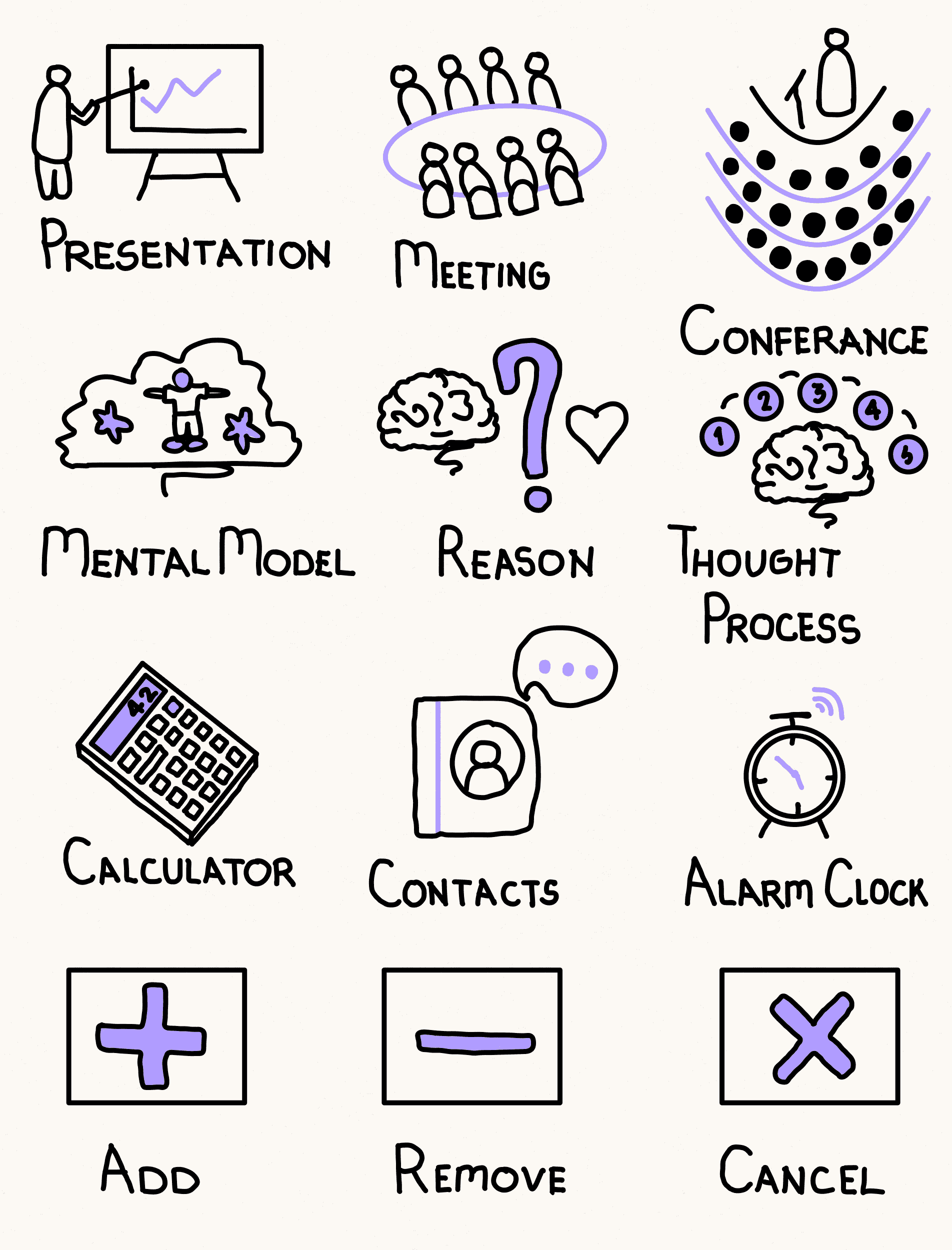
Days 52-56
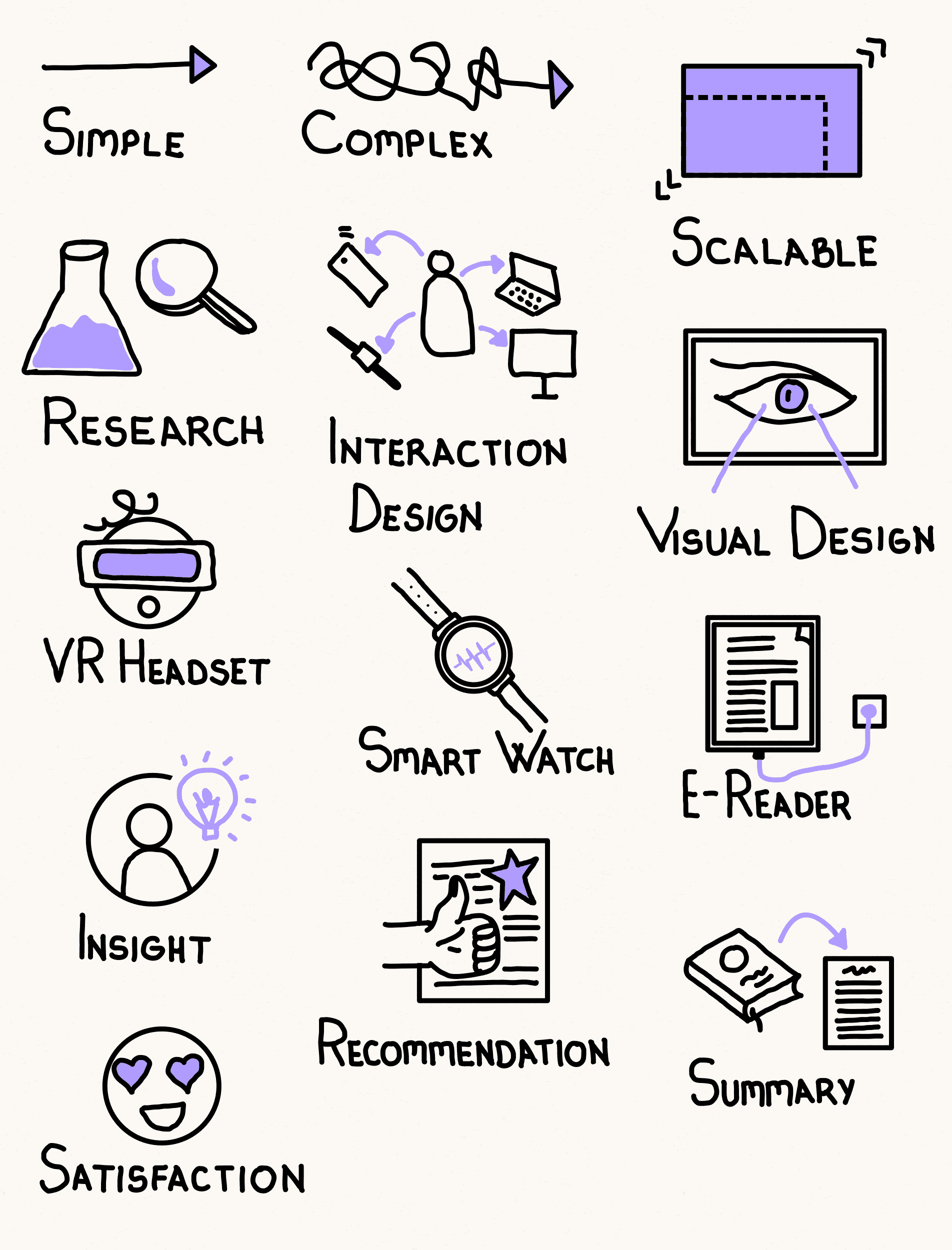
Those simple sketches of mine did not always lit a image light that is connected to the digital design world. I did not push myself to find always tech-related concepts because this was what made my texture memorable to me. I tested some of them like build, data science or release I got positive reviews about them.
Days 56-60

I chose black as line and purple to color them partly. Black is a great and strong outliner as we probably all now. Purple always reminds me of creativity and also dreamy things. It neither represents success nor failure. When I want to combine those drawings with a story board including success, failure or warning colors purple would still fit well too.
Days 61-65
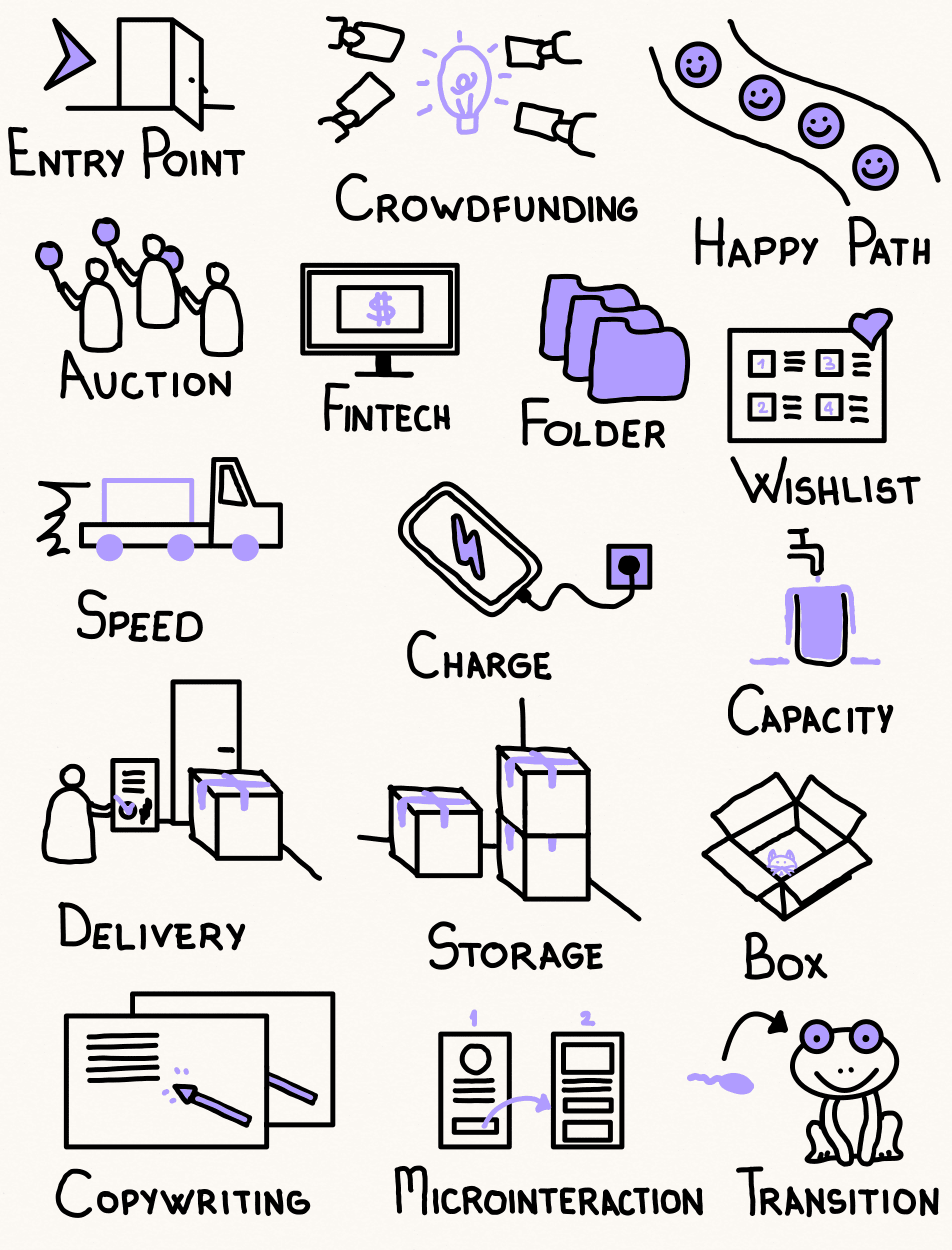
Days 66-70
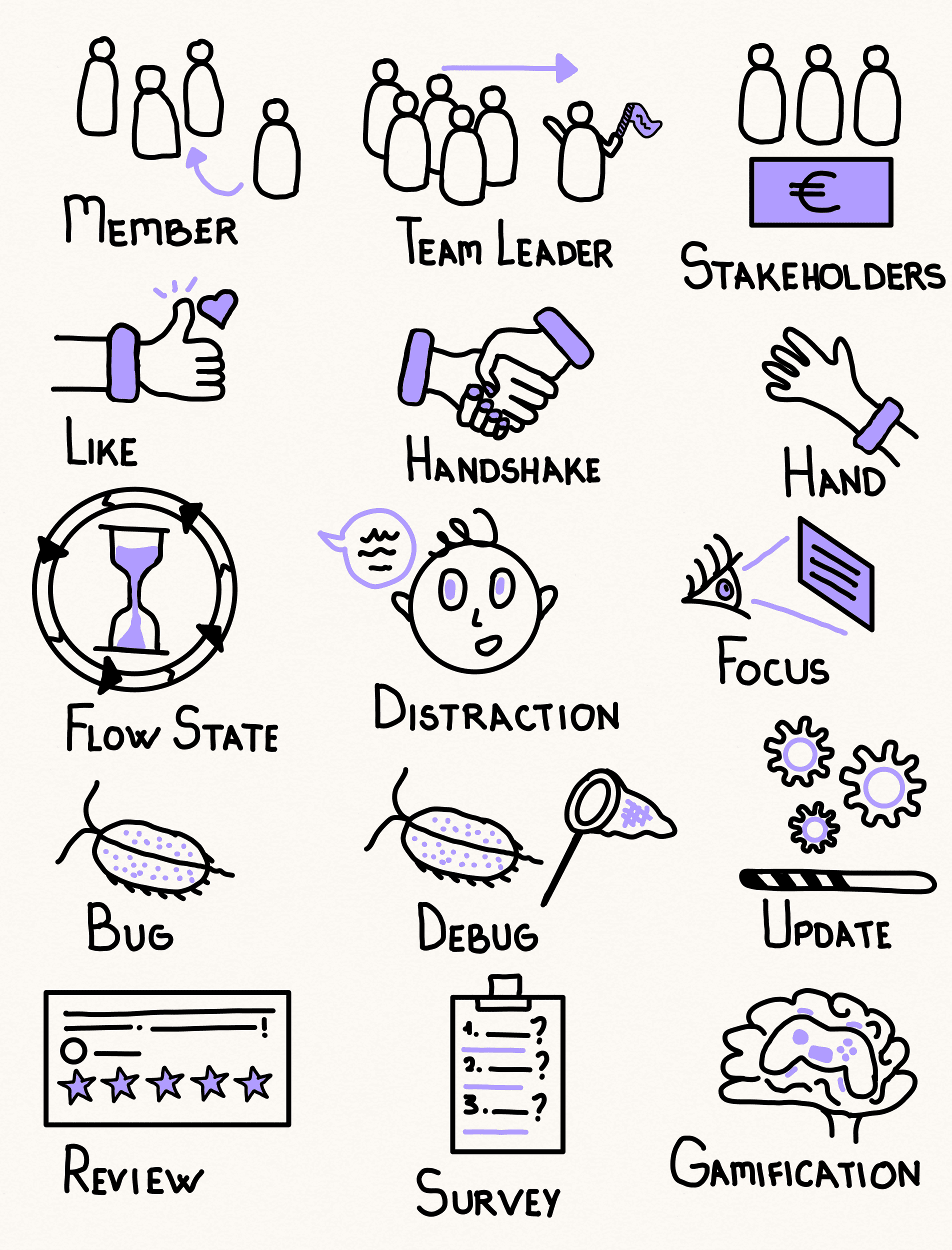
Days 71-75
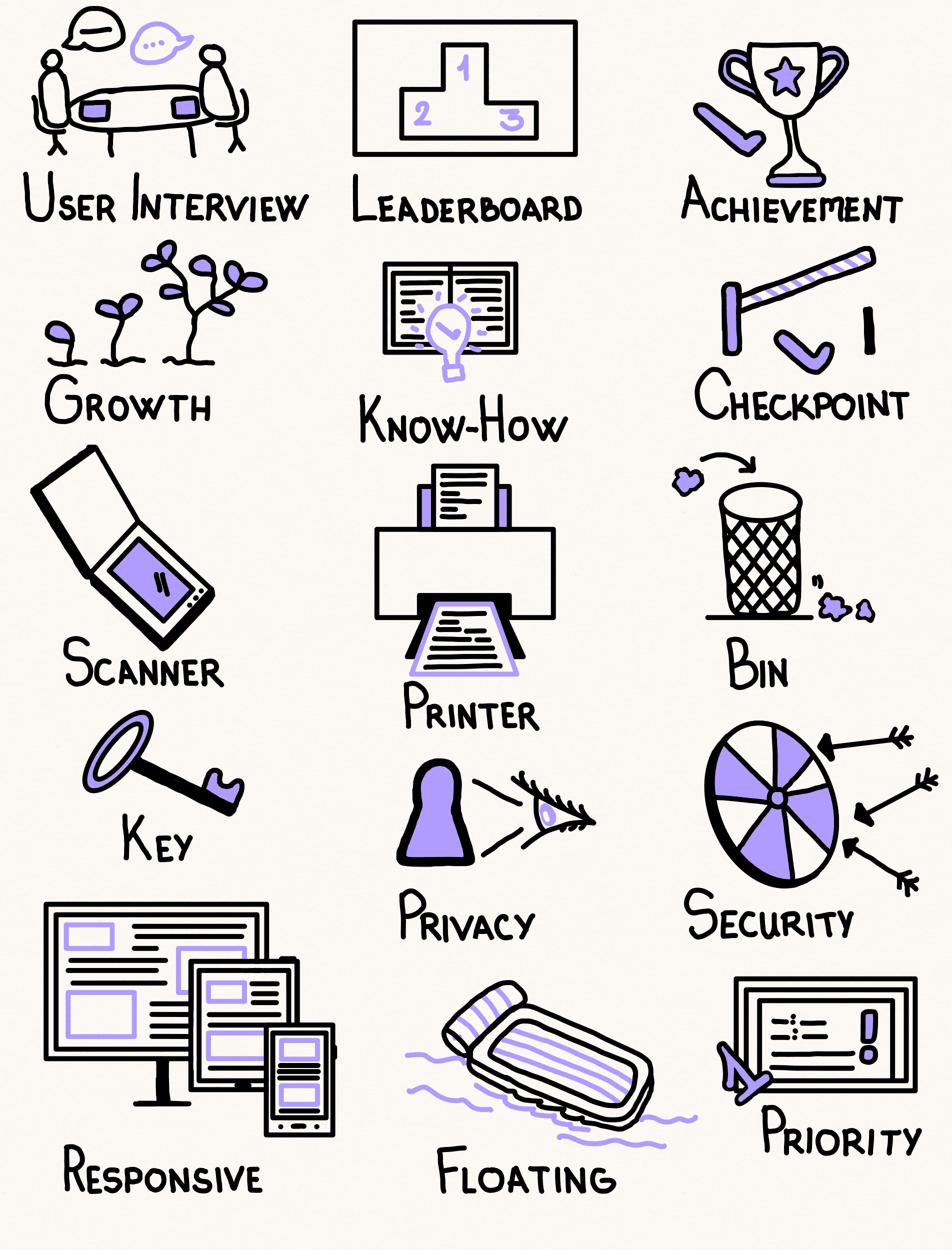
Days 76-79
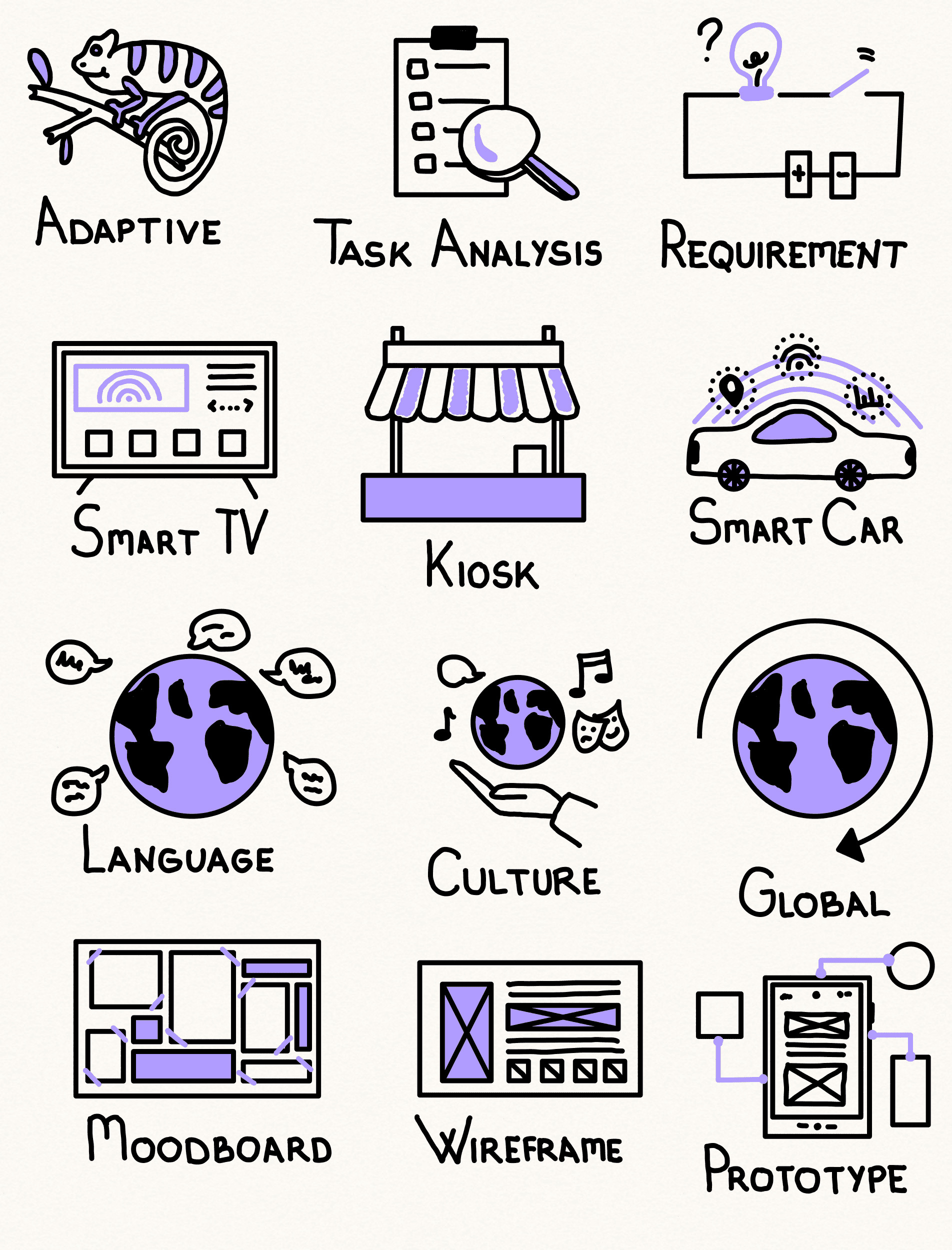
Days 80-84

One thing that I could maybe criticize back is I could have use maybe a thinner pen weight. What do you think?
Days 85-88
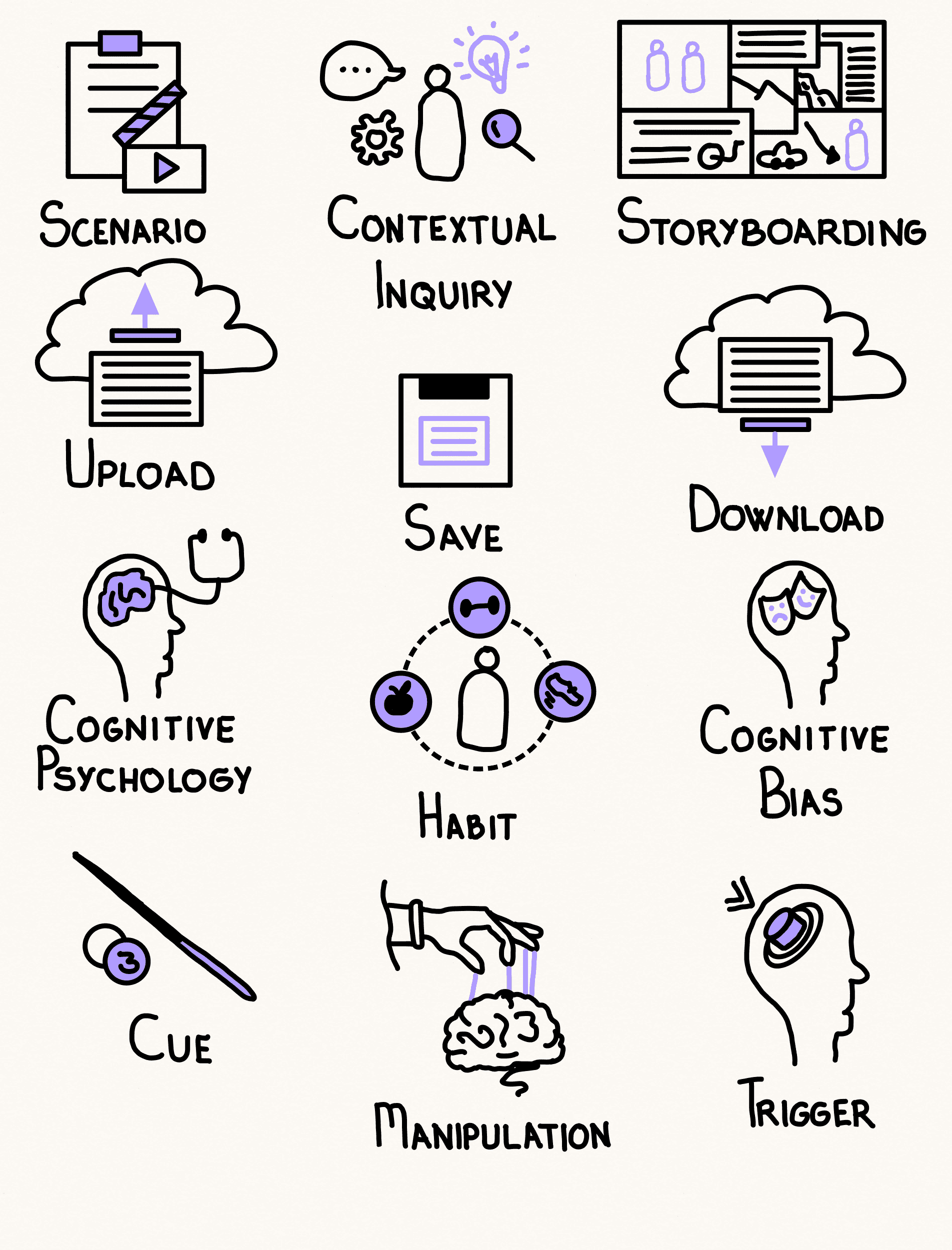
Days 89-92

I learned working smart not hard. If I made a head sketching before I multiplied it and used any other necessary place. Probably you realized my search magnifier and cognitive head sketches exist on many pages.
Days 93-96
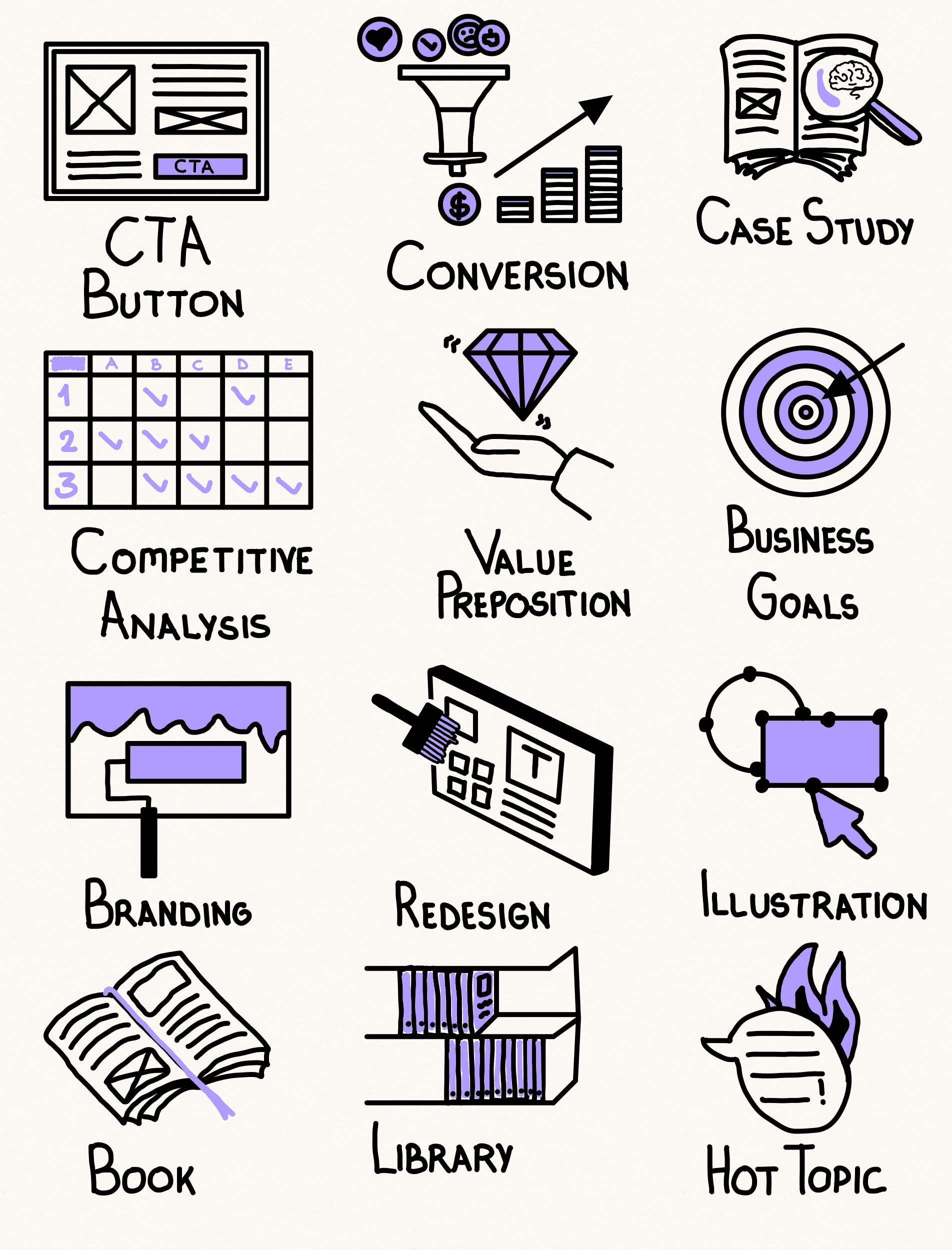
I decided to note some prompts that I hear daily or during the events and practise on how to visualize them.
Days 99-100
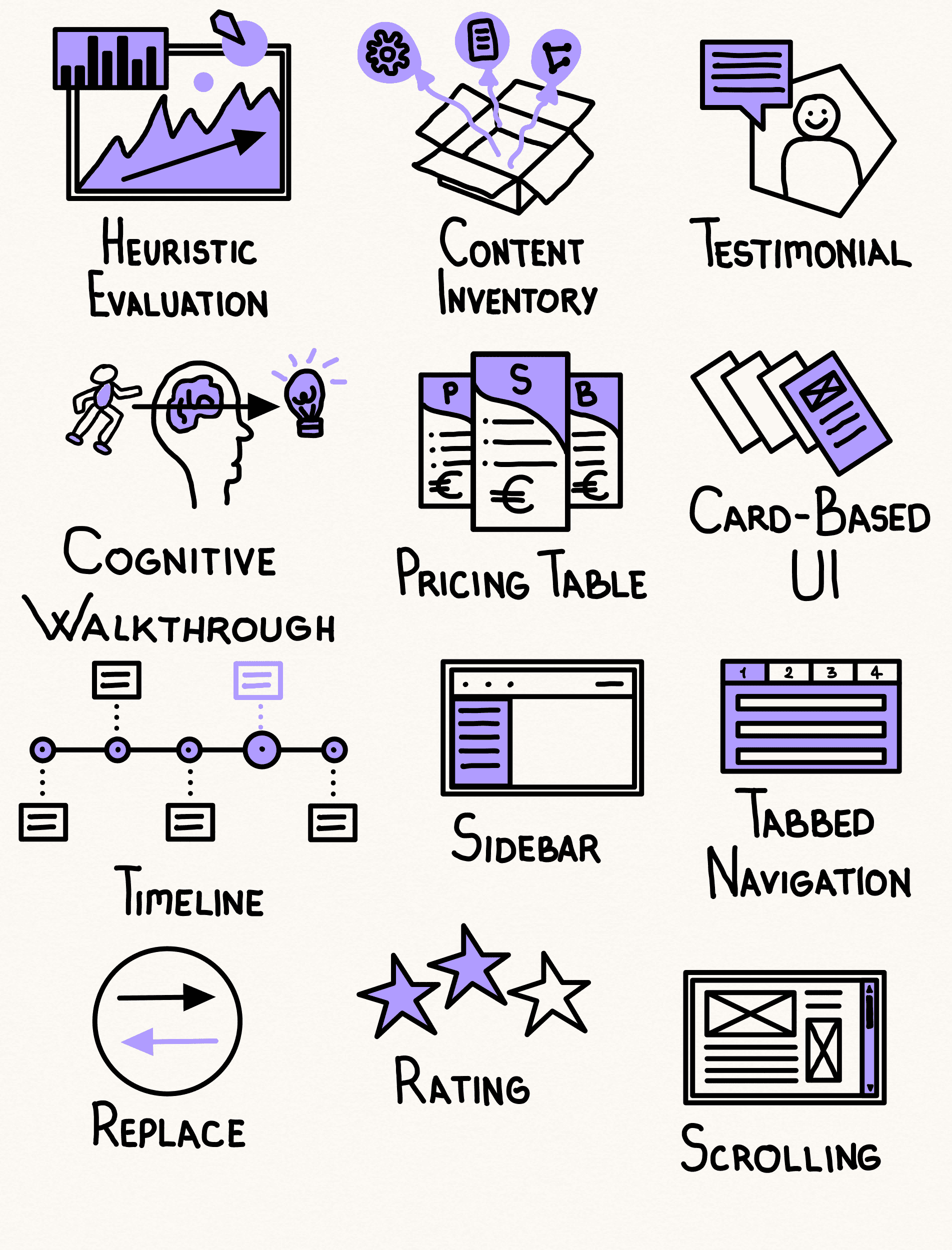
Many heartfelt thanks to Krisztina Szerovay!
Her book introduced me to the transformative world of visual storytelling and thinking. Through daily sketching challenges, I found not only personal growth but also a powerful tool for collaboration.
Visuals break down communication barriers, foster creativity, and streamline decision-making, making them indispensable in today's interconnected world. If you're looking to enhance your creativity, communication, and collaboration skills, I highly recommend diving into the world of visual storytelling and visual thinking.
I will now continue with her 21-month challenge that focuses on certain concepts each month, starting with summer :)-yay!
Cheers,
C.
Resources:
https://medium.com/uxsketching/the-100-day-long-ux-visual-library-challenge-book-b8c99ca607be
https://medium.com/design-bootcamp/live-sketchnoting-pro-tips-for-designers-405965cd518c
https://medium.com/uxsketching/storytelling-for-ux-designers-af95d7c1c420
https://visualsinprogress.com/what-is-visual-thinking-about/
https://www.mindmapper.com/what-is-visual-thinking/
https://ideascale.com/blog/visual-thinking-definition/
